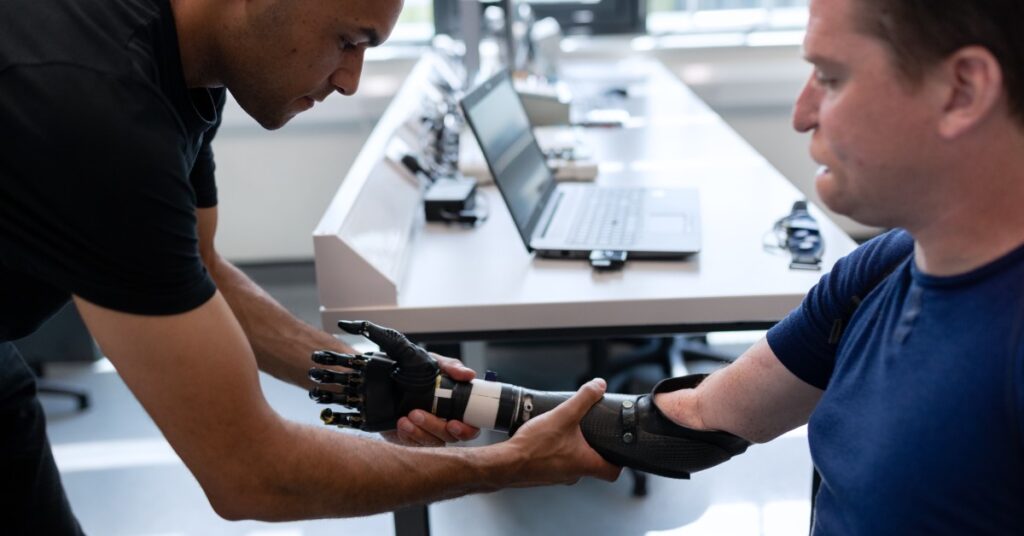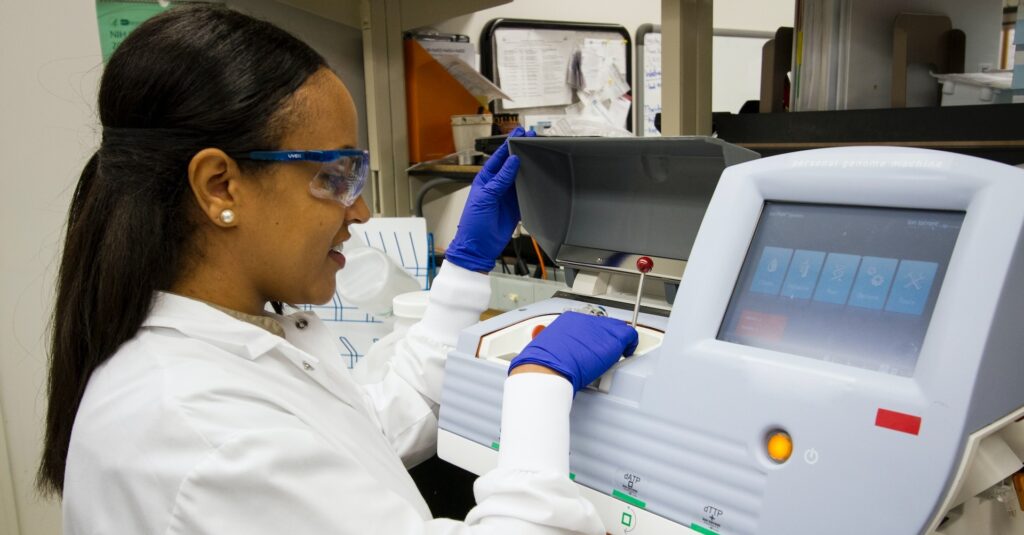
What Is the Epidemiological Triangle?
The epidemiological triad or triangle is an organized methodology used [...]

Injuries, illnesses, and physical and cognitive disabilities can rob people of not only strength and mobility but also the ability to care for themselves. Physical therapy (PT) and occupational therapy (OT) are two types of rehabilitative care that people turn to when they need help gaining or regaining motor skills and learning or relearning how to perform daily life tasks.
These therapies used to be regarded as one discipline—the civilian ‘reconstruction aides’ who served in World War I are often credited as the mothers of both—but today, physical therapy and occupational therapy are treated as two distinct disciplines. Each of these disciplines plays an important role in healthcare, and some patients are prescribed both PT and OT. A person who has suffered stroke-induced paralysis, for example, might work with a physical therapist until they’ve regained strength and range of motion Then they could begin working with an occupational therapist to regain the motor control and coordination necessary to do things like write or peel a potato.
What sets these fields apart are the goals the practitioners in each discipline seek to achieve with their patients. In general, physical therapists are focused on helping patients achieve greater flexibility, regain range of motion, gain strength, move without pain, and—in more severe cases—relearn to use limbs or to walk. In contrast, occupational therapists teach their patients exercises, adaptations, and strategies and provide them with tools that help them function more independently and do everyday daily activities with minimal challenges. In OT, someone might spend time learning or relearning how to tie their shoes, cook, or use a computer. That said, the differences between PT and OT aren’t always so clear cut.
In this article about physical therapy vs. occupational therapy, we cover:
The number one distinction between physical therapy and occupational therapy is that PT is focused on gross motor function and biomechanical issues. In contrast, OT focuses on fine motor and cognitive skills. Physical therapists are experts in anatomy and body mechanics, which means they can treat physical impairments that make it hard for some patients to care for themselves or get around independently. They can:
On the other hand, occupational therapists have a deeper understanding of the motor skills and cognitive skills required to complete practical tasks and engage in social activities. They can guide patients through exercises designed to help them gain the strength and control necessary to get dressed, cook and eat, clean, write, use a computer, and even drive. When necessary, they can create environmental modification plans that make it easier for patients to complete daily tasks without help. Occupational therapists sometimes also work with patients struggling with issues related to mental health challenges. This is something PTs never do.
There can be a significant overlap between the work of physical therapists and occupational therapists. According to the American Physical Therapy Association (APTA), PTs are “movement experts who optimize quality of life through prescribed exercise, hands-on care, and patient education.” Compare that to the American Occupational Therapy Association (AOTA) definition of OT: “Occupational therapy practitioners enable people of all ages to live life to its fullest by helping them promote health, and prevent—or live better with—injury, illness, or disability.” Those descriptions aren’t that different.
Indeed, the fields share plenty of similarities. Physical therapists and occupational therapists both:
Both disciplines are broad in scope, and in some work environments, the work of PTs and OTs may be virtually identical. A patient who needs help learning to move again after a long, debilitating illness might work with a physical therapist, an occupational therapist, or both. Preemies who require early intervention services to address developmental delays might work with a PT or an OT. Physical therapists and occupational therapists may do the same work in a hand therapy clinic, helping patients increase grip strength and range of motion.
It’s quite common for patients to receive both physical therapy and occupational therapy. In many cases, a patient will work with a PT until they’re strong enough to start sessions with an OT (like the hypothetical stroke patient described above).
There are also circumstances, however, in which patients receive physical therapy and occupational therapy at the same time. A child born with cerebral palsy, for example, might work on balance and mobility in sessions with a PT outside of school and have sessions with an OT in school during which they work on practical skills like cutting paper and writing with a pencil. A premature infant receiving early intervention services might have separate sessions with a physical therapist to address torticollis (stiffness in the neck muscles common in preemies) and an occupational therapist to work on skills like crawling.
PTs and OTs will sometimes take some of the same core courses, but degree programs focused on these specialties tend to look very different. To become a physical therapist, students need to earn a bachelor’s degree and then complete a three-year Doctor of Physical Therapy program accredited by the Commission on Accreditation in Physical Therapy Education (CAPTE).
To become an occupational therapist, students need to earn a bachelor’s degree and then complete either a two-year Master of Occupational Therapy (MOT) program or a three-year Doctor of Occupational Therapy (OTD) program accredited by the Accreditation Council for Occupational Therapy Education (ACOTE). Be aware that while the master’s degree in occupational therapy is sufficient for now, there may come a time when AOTA mandates the OTD as the new minimum entry-level degree in occupational therapy.
Let’s take a look at how curricula differ between these two disciplines. At the University of Pittsburgh, which is home to one of the top Doctor of Physical Therapy programs in the US, DPT students take core courses like:
The University of Pittsburgh also has a highly-ranked entry-level OTD program with core courses like:
Both programs share in common the requirement that students log a minimum number of clinical fieldwork hours designed to meet the board certification and licensing requirements of each discipline. According to APTA, PT students spend about 27 weeks in their final clinical experience. AOTA requires that OT students complete a minimum of 24 weeks of full-time supervised fieldwork in a variety of settings.
Both PTs and OTs must be licensed to work legally in clinical settings in the US. Physical therapists must pass the National Physical Therapy Exam before they’re eligible for licensure, while occupational therapists have to pass the National Board for Certification in Occupational Therapy or NBCOT exam.
Beyond that, states can set their own licensing requirements for PTs and OTs. Some require physical therapists and occupational therapists to submit to criminal background checks or include letters of professional recommendations with their applications. The fastest way to ascertain these requirements is to check with the state Board of Health.
In physical therapy and occupational therapy, licensed practitioners may need to earn specialty credentials to work with certain patient populations or to employ specific therapies. PTs and OTs pursue very different certifications, however. For instance, the American Board of Physical Therapy Specialties (ABPTS) offers specialty area credentials for PTs in the following areas:
Some common specialty area certifications for OTs include the:
Physical therapists earn more, but not a lot more. According to data collected by the US Bureau of Labor Statistics, physical therapists earn anywhere from about $62,000 to $125,000 per year while occupational therapists earn anywhere from about $57,000 to $121,000 annually. Entry-level salaries in both fields are closer to $60,000, but median salaries tend to fall around $87,000. Of course, experience, location, practice setting, and other factors play a role in how much a practitioner earns in both physical therapy and occupational therapy.
Physical therapy and occupational therapy meet genuine needs. According to the US Bureau of Labor Statistics, job growth in both of these professions will outstrip the national average for all occupations. Jobs for physical therapists will likely be created somewhat faster because health insurance companies are more likely to cover physical therapy than occupational therapy. Whether patients seek occupational therapy is often conditional upon whether they can pay out of pocket for services.
However, the difference in outlook for these fields is negligible: 22 percent job growth for physical therapy versus 18 percent job growth for occupational therapy. This is likely because advances in medicine have led to better outcomes in trauma situations and premature birth, as well as an increase in outpatient surgeries. Additionally, people are living longer and staying active later in life. The demand for physical rehabilitation services and home health care designed to help the elderly stay independent longer will only go up.
Both professions have room for new blood, which means you should pursue a career in whichever appeals more to your personal and professional interests. The median pay in each of these fields is also relatively high, so you should ask yourself which field you think you will find more rewarding. Consider how long you want to stay in school. You’ll definitely spend three years earning a Doctor of Physical Therapy, but you still can choose between a two-year Master of Occupational Therapy program and the three-year Doctor of Occupational Therapy. At the end of the day, there’s no right or wrong answer when it comes to physical therapy vs. occupational therapy as career paths—there’s only what you want to accomplish.
(Last Updated on February 26, 2024)
Questions or feedback? Email editor@noodle.com

The epidemiological triad or triangle is an organized methodology used [...]

A family nurse practitioner (FNP) provides comprehensive primary health care [...]

FNPs practice in a broad range of health care settings. [...]

Some epidemiologists assist pharmaceutical companies in developing safer medicines. Some [...]

A Bachelor of Science in Nursing (BSN) is a four-year [...]
Categorized as: Occupational & Behavioral Therapy, Physical Therapy, Nursing & Healthcare